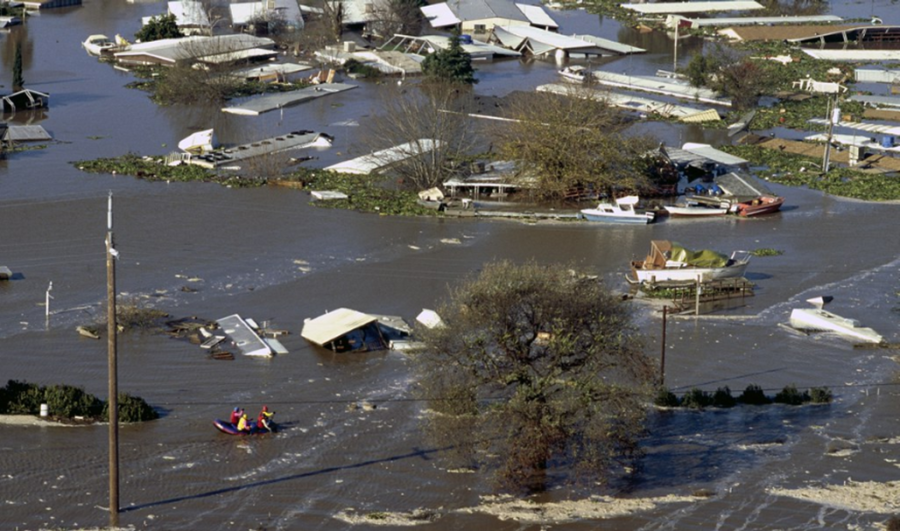California’s Recent Weather
March 1, 2023
California’s recent weather has taken a toll on a lot of people and as humans continue burning fossil fuels and heating the atmosphere, the warmer air will hold moisture which will cause storms in many places and are more likely to be extremely wet and intense.
A string of atmospheric rivers, which are bands of water vapor from the tropics that dump rain or snow when it makes landfall, is responsible for the severe weather. Flood warnings had been issued across the Bay Area and central Valley, including in Napa, Marin, Sonoma, Sacramento, Merced and Fresno counties.
Around January 8th, 2023 strong wind gusts were up to 70 mph with numerous trees and power lines down with power outages; More than 19,000 people were without power.
Since December 26th, 2022, San Francisco has received more than 10 inches of rain. Tornado warnings had also been sent out around January 10th and they were mostly active for parts of Modesto, Ceres, Riverbank, Rancho calaveras, Valley springs and San Andreas.
Fresh rainfall could trigger more flooding mudslides as oversaturated land from wreck it downpours gets inundated again california has already endured more than 500 landslides since December 30th, 2022 and violent winds that are to topple trees in weakend soils, threatening more power outages, killing 23 people, wiping out 130 homes and turning entire neighborhoods into lakes; causing more misery in the state.
I asked Pitman High School sophomore, Karyme Silva, ¨How has the recent weather affected you?¨ She stated ¨It made me feel less motivated in school work and in general.¨
I also asked another student, Julian Ortega-Ramos that same question and he said ¨ The floods made me really happy.¨
About 71% of California was experiencing ¨severe¨ drought on Wednesday, January 10th; but the wet and wild weather over that past dozen days won’t end the drought, at least not yet. Much of the water delivered to the Golden State in this month’s storms is now flowing back into the ocean rather than being saved up for the rest of the year. That’s partly due to inadequate infrastructure and limitations in how quickly the landscape can absorb water. But it’s also due to water management decisions, including deliberately limiting water storage in reservoirs below capacity due to flood control requirements.
The recent weather has affected hundreds of people and has damaged a lot of properties and because of global warming this may not be the end of it.
